Confused about all the different types of carpet available? Not sure whether to go with wool or synthetic? What the difference is between sisal and seagrass? In this article, you’ll learn all about the different types of fibre that carpets and area rugs are made from, and how to choose the right kind of carpet for your home or business.
Animal Fibres
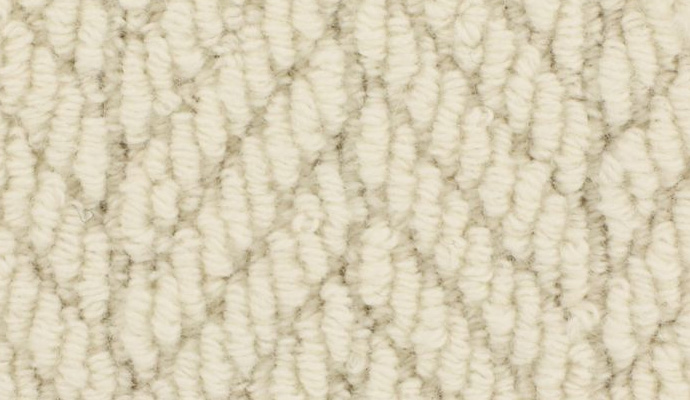
Wool
Wool carpets have been made for centuries, in many parts of the world, and are so long-lasting that they’re sometimes handed down from generation to generation within families. Highly prized for their quality, comfort and durability, wool carpets are one of the more expensive types of carpet, but one many people find well worth the investment.
- As a natural material sheared from sheep, wool is a sustainable, renewable resource, and also completely biodegradable.
- Pure wool is hypoallergenic, and also one of the best choices for people with chemical sensitivities.
- In fact, wool carpets can even improve indoor air quality by absorbing and neutralizing polluting gases and airborne particles.
- Some of the best wool in the world comes from New Zealand. New Zealand wool is also an excellent choice in terns of environmental impact and animal welfare, as the country has very strict laws protecting their sheep and the natural environment.
- The strength of wool fibres makes them resistant to staining, pilling and fire.
- The natural lanolin coating wool has can cause small amounts of water to bead up on surface, but it’s still not a good idea to install it in damp areas.
- Wool carpets are excellent for insulation, both in terms of temperature and noise.
- Their soft, cushiony feel makes them one the most comfortable and luxurious types of carpet available.
- Wool comes in range of grades — low grade wool carpets costs less, but are of lower quality and stain more easily. High grade wool is better quality, but more expensive.
- Wool is often used in blends with acrylic or other synthetics to reduce costs, and provide some of the benefits of both types of fibre.
We stock a great variety of wool carpet — both 100% wool, and wool blends.
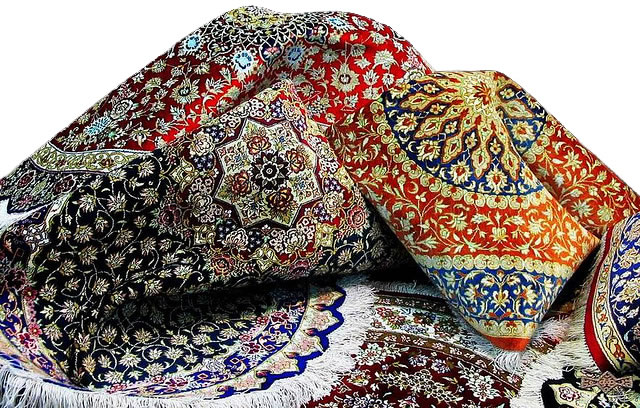
Silk
Silk carpet is a rare, specialized and extremely high end type of carpet, usually found only in area rugs — and often small ones, because of the labour and expense involved. Weaving silk rugs is a traditional craft in China and the Middle East, and the rugs are typically handmade, and one of a kind. The threads are so fine, the weavers have to use a magnifier to see them! It can take a weaver six months to make even a small silk rug.
- Because it is so labour-intensive to make, this is a very high-end type of rug, and consequently extremely expensive.
- Silk is durable, but soils very easily. Because of this and the value of the rugs, many people display them on the wall like tapestries rather than actually putting them on the floor.
- For the look of silk without the expense, some manufacturers use “art silk” (short for artificial silk), which can be made of any of a number of different fibres, from viscose/rayon to polyester to mercerized cotton.
Synthetic Fibres
Synthetic carpets were developed in the early to mid 20th century, and quickly became popular for their low cost, as a way of making beautiful carpets accessible to a wider range of people. Here’s a quick rundown of the most popular types of synthetic carpet:
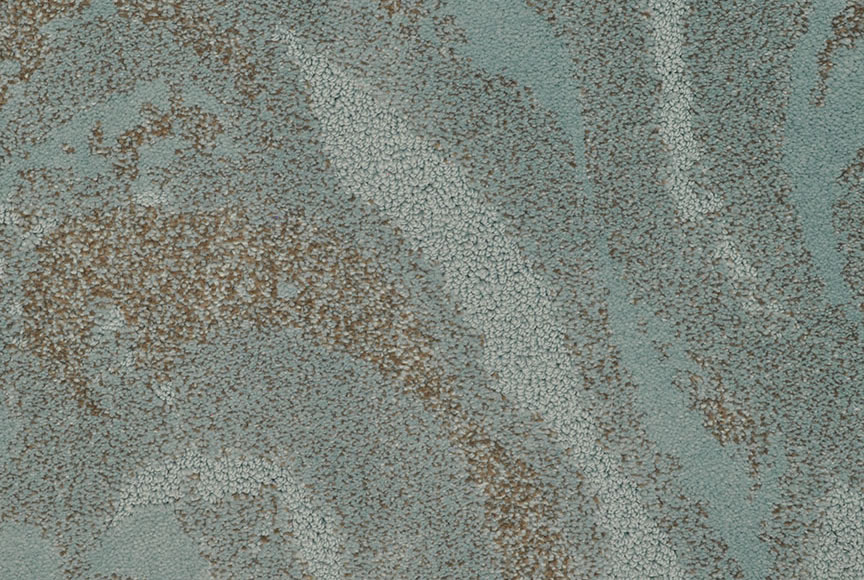
Nylon
Nylon, which dates back to 1938, is today the most popular type of carpet fibre around. The material has been through many improvements since its origin, and the type in use today is referred to as 6th generation.
- Nylon is the most durable of all the synthetic fibres — nylon carpets can last 12-15 years.
- Nylon carpets are quite soft compared to other types of synthetic carpet, and are resistant to staining (if properly treated before installation), mold and mildew.
- Nylon fibre comes in a range of deniers (weights), is easy to dye, and holds colour very well.
- While less expensive than wool, it does tend to cost more than other synthetics.
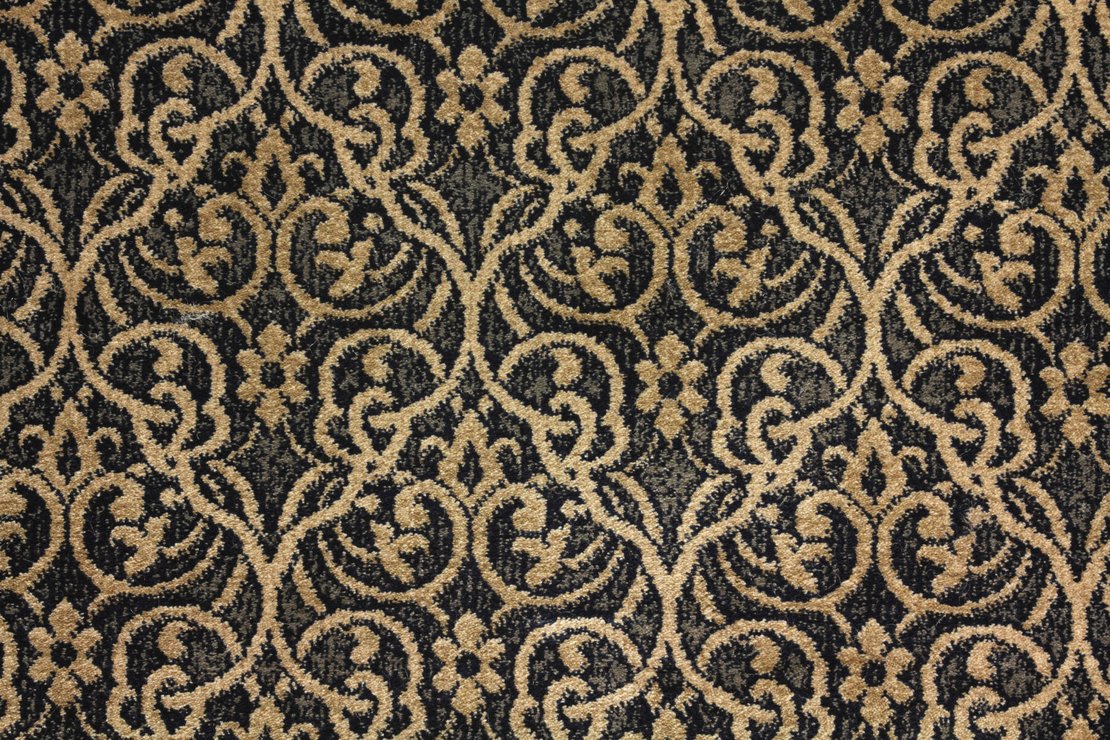
Polypropylene
Also known as olefin, polypropylene carpet was first introduced in Italy in the late 1950s, and has been growing in popularity ever since.
- Polypropylene fibres are similar to wool, and are sometimes used as a wool substitute.
- Polypropylene carpet is almost as soft as nylon, but less expensive.
- It’s very often used a lot in commercial settings, including outdoors, as it’s quite long-wearing, moisture resistant, and doesn’t fade, but is more economical than nylon.
- Polypropylene carpets do soil easily, but are easy to clean and resistant to staining.
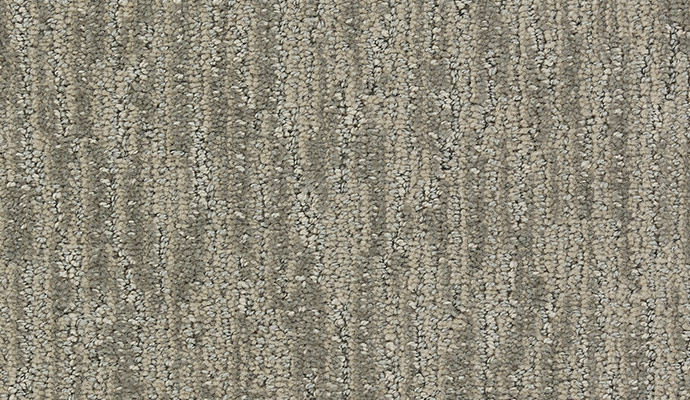
Polyester
Polyester is a relatively inexpensive fibre, popular with those on a budget. It was first introduced commercially in the UK during the 1940s, and is very widely used in clothing and other textiles, in addition to carpet.
- It’s excellent at holding colour, so it’s a good choice for those who like vibrant colours, but it can fade with prolonged exposure to sunlight, so it’s best used in rooms that don’t get too much direct sunlight.
- Polyester carpet is moisture resistant, non-allergenic, and resists staining, but it can tend to flatten under weight or heavy traffic, so it’s best used in lower-traffic areas like bedrooms.
- Some types of polyester carpet are made from recycled PET from plastic bottles, making them a great choice for the environment!

Acrylic
Acrylic fibre was developed in the US in the 1940s, but didn’t become popular until the 1950s. It’s another popular budget choice.
- Acrylic fibre has a similar feel and appearance to wool but is much less expensive. It’s sometimes marketed as synthetic wool, and is often used in wool blends.
- Acrylic carpet is resistant to static, moisture, mildew, fading and staining, but the down side is it’s not very durable. Expect to have to replace it sooner than you would with other types of carpet.
- It can also be discoloured by contact with alkaline chemicals, such as those used in many cleaning products.
Plant Fibres
There are a number of types of natural plant fibre carpets available, which have many characteristics in common. They’re all natural, renewable materials, so they can be an excellent choice environmentally. With the exception of cotton and jute, they tend to be rough-textured and come in natural shades of beige to brown, though some types can be dyed. They can be installed wall-to-wall, but are more often used in area rugs. Plant fibre carpets are also increasingly popular with interior decorators for their earthy, natural look.
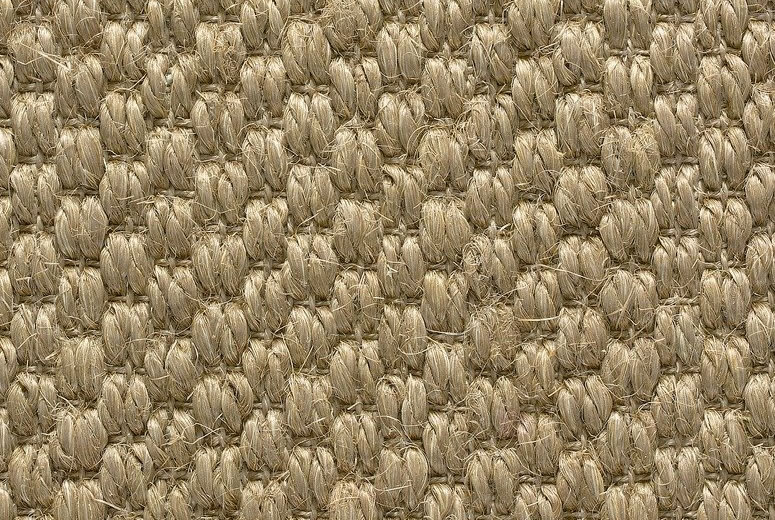
Sisal
One of the most popular plant carpet fibres, sisal comes from a type of agave plant — no, not the same type used in making tequila or agave nectar, though it is related! It’s been used in Central America since precolonial times, and is now also grown in Africa and Asia.
- It’s extremely durable, more so than any other commonly used plant fibre, but has a somewhat rough, scratchy texture.
- It’s typically woven into tight rows, but sometimes into other patterns for visual interest.
- Unlike some plant fibres, sisal is absorbent enough that it can be dyed, so there are a wider variety of shades available.
- The down side of that is that it’s also easily stainable, so keep that in mind when deciding where to use it. Even some cleaning products can stain it, so be sure to follow the manufacturer’s directions when cleaning it.
- Lastly, sisal can get a bit slippery over time, so avoid using it in stair runners.
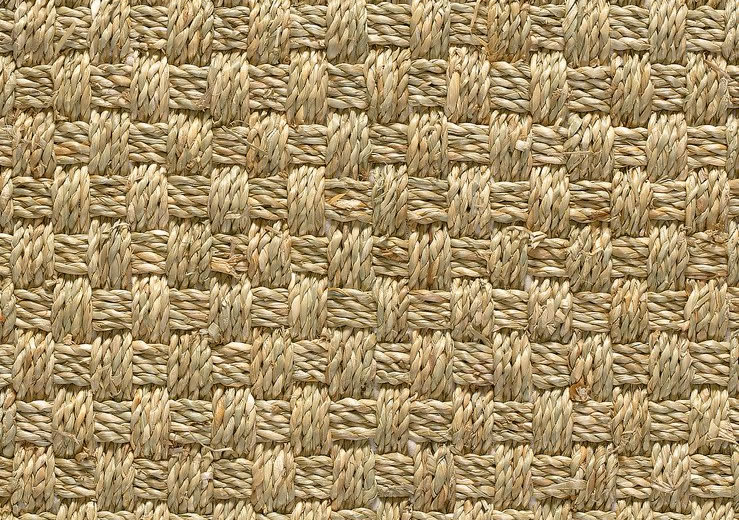
Seagrass
Seagrass looks similar to sisal, and is often confused with it. But its origins are quite different! Seagrass is not a single species of plant, but a whole category of them, including four separate families. Most types grow in shallow salty waters, including saltwater marshes. Seagrass can be found everywhere from the tropics to the Arctic, and has been used by humans for thousands of years — not only for carpet, but everything from thatched roofs to bandages.
- Seagrass is a great environmental choice, as it cleans the surrounding water and helps remove carbon dioxide from the atmosphere. It also grows very fast and is easy to harvest, so it’s a highly renewable resource.
- Seagrass rugs are a little softer on the feet than sisal, but also less durable.
- It’s also less porous than sisal, making it more stain resistant — spills can be cleaned up with a damp cloth if caught right away. But that also means it doesn’t take dye well, so it’s typically only available in natural colours (though coloured strands of other fibres are sometimes woven in for contrast).
- Seagrass fibre often starts out a greenish colour, but fades to more of a wheat tone over time with exposure to light and air. So don’t be surprised if your new seagrass carpet has a slightly green tone at first.
- Seagrass fibre is naturally anti-static, and repels dust and dirt, but it can attract mold and mildew if it’s frequently damp, so it’s definitely not the best option for bathrooms or kitchens.
- It can be used on stair runners if you place it with the grain running parallel to the step treads, to improve traction.
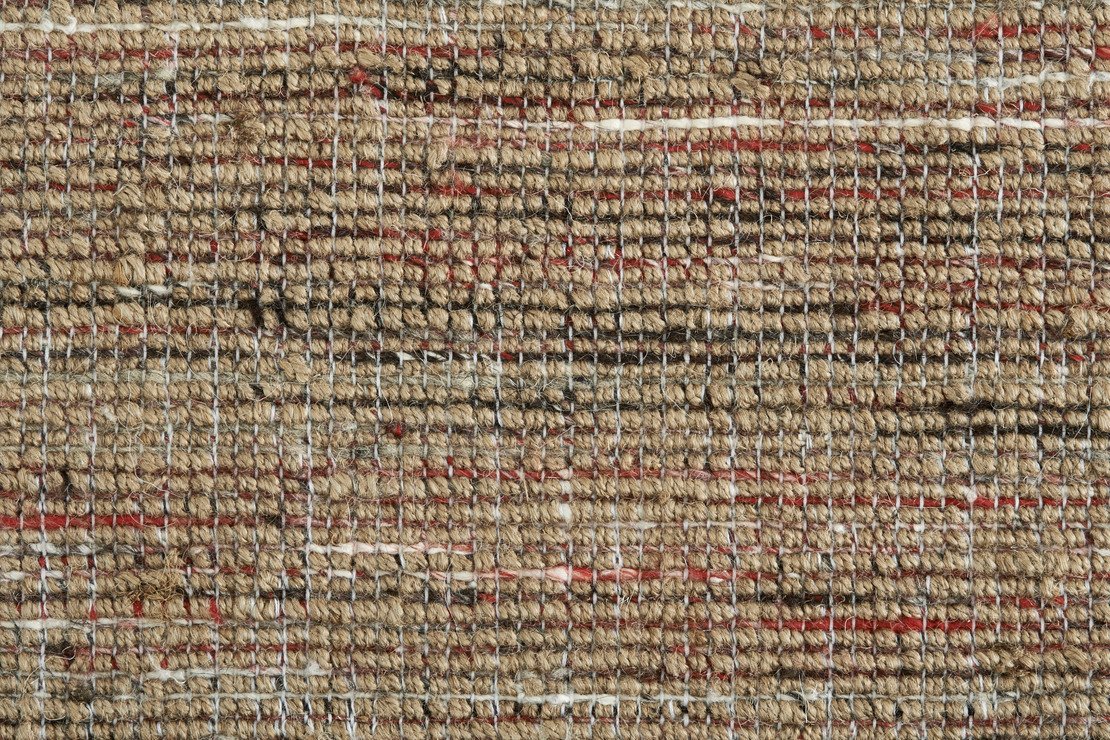
Jute
Jute is a plant fibre made from either of two species of plants in the hibiscus/mallow family. Hailing from India and Bangladesh, it’s traditionally used to make fabric — both burlap fabric and the backing fabric used for many types of carpet. But in recent years it’s been used more and more as a carpet material on its own, or in blends with cotton or other fibres.
- Jute’s texture is softer than most plant fibres, though not as soft as wool.
- Conversely, it’s less durable than the others, and thus better for light-traffic areas.
- Its natural colour is an earthy brown, but it can be dyed other shades.
- Because of its colour and texture, jute doesn’t show dirt easily, and can often be cleaned by just shaking it out.
- However, it’s not very water-resistant, and stains easily, so keep it away from damp areas and be sure to blot up any spills quickly.
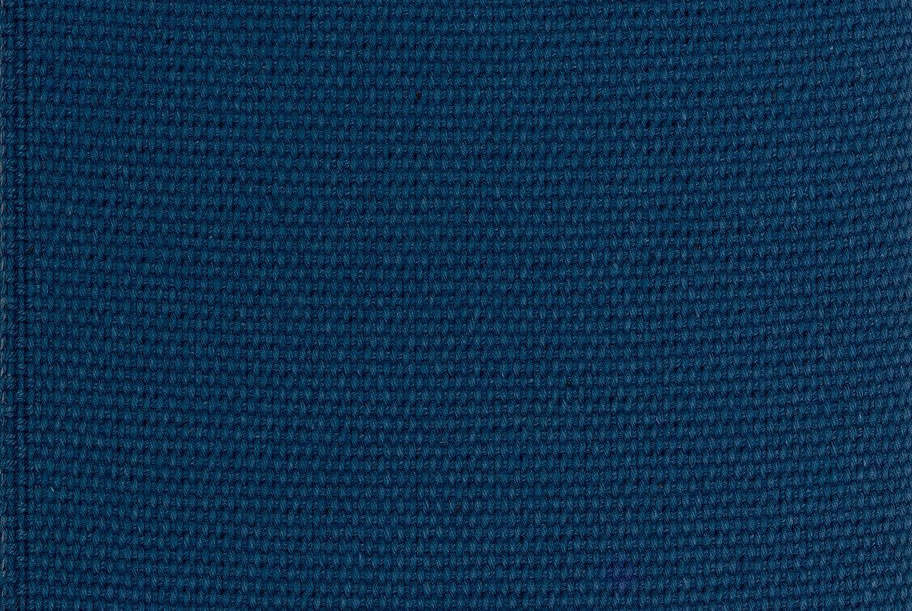
Cotton
Cotton is extremely different in appearance and feel from the other fibres listed here, but it’s still a plant fibre. And one that pretty much everyone is familiar with from its use in in clothing and other textiles, so it doesn’t need much introduction.
- Cotton is very lightweight, and one of the softest fibres available.
- It can be used on its own, or blended with wool or other fibres.
- Though wonderfully soft on the feet, it isn’t as widely used in carpet as other fibres are, because it’s more prone to staining and fading, and can be expensive if used on a large scale.
- Cotton can be a good choice in area rugs, though, because those are much easier to clean than wall-to-wall carpet. Small cotton area rugs can often go in the washing machine, making them much easier to care for.
- Cotton in rugs can be braided or flat woven. One popular form is “rag rugs” made from reused fabric scraps.
So, that’s our rundown on the many types of carpet fibre! We carry many of these types of carpet, in a great selection — you can see many examples in the carpet section of our web site, but we have much more in the store. And if we don’t have what you’re looking for in stock, we’ll be happy to order it in for you — we work with many of the best carpet manufacturers in the business and can bring in almost anything! Call us at 416-602-8956 or use the contact form below to find out more.
- Log in to post comments
